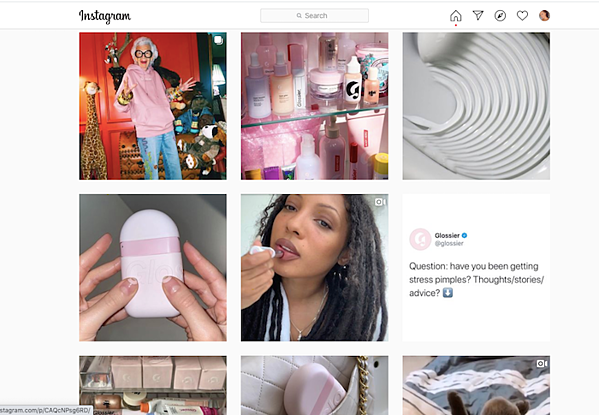The marketing strategies you begin using when your business is a startup determine the growth your business will have. To make sure you have steady growth, you need to create a marketing budget and allocate funds to the right marketing channels that attract customers to your business and create a good amount of brand awareness.
Using the proper startup marketing ideas and reviewing other startups’ marketing strategies can help your business to drive leads on a tight budget.
What Is Startup Marketing?
Startup marketing is the foundational marketing process involved in attracting customers, users, and subscribers to a new business in a creative and innovative way. It often requires a large budget, but with creativity, time, and the proper tools, you can market your startup without spending too much.
Startup marketing poses a unique challenge for entrepreneurs because they often have limited resources to work with when they begin developing a marketing plan and budget.
They may lack time, money, or the right talent. It takes a well-balanced marketing plan that includes public relations, effective content marketing, and targeted messaging to attract and help the right audience.
Every effort that goes into startup marketing must be planned and well executed to produce the desired results.
How to Create and Use a Startup Marketing Budget
You’ve already created a great new product or service and you have great ideas for marketing them, but how much will it cost? Any good marketing strategy begins with a well thought out budget.
Here are five steps you can take to create a successful marketing budget for your startup:
1. Set Business and Marketing Goals.
Your budget should be indicative of the goals you hope to achieve as a startup business. You can customize how much you spend on specific marketing efforts based on the long-term and short-term goals you wish to accomplish.
Setting specific, measurable, attainable, relevant, and timely (or SMART) goals is the best way to ensure you stay on track when you complete the necessary tasks to reach your business and marketing goals.
2. Determine Your Budget.
New startups usually have little to spend on marketing and need to focus their efforts on attracting customers. Here’s how much money you may choose to allocate based on what your focus is for your startup:
- About $ 1,000 per month: Early on, try to focus on using your time and resources to acquire customers and create a brand identity. During this spending stage, you can try out different marketing strategies to see what works best before you structure your budget.
- $ 1,000 to $ 5,000 per month: When you have this amount to spend, you can begin to focus on creating a web presence for your business. This begins with a great company website that is designed to be user friendly to create conversions for your business using calls to action (CTAs) and forms. Then, you can dedicate some of your funds toward social media marketing to create engagement and a strong following.
- More than $ 5,000 per month: Once you have more than $ 5,00 per month to spend on marketing, you can hire an in-office marketer, or you can outsource your marketing to help you support your efforts.
3. Plan to Distribute Your Funds.
After you set your marketing budget, you must decide how you will use your funds on various marketing channels and platforms.
The best way to do this is to align your budget with your startup goals to help you with your decision making process.
Some marketing channels you may plan to distribute your funds to include:
- Content marketing
- Email marketing
- Pay-per-click marketing
- Social media marketing
- Word of mouth
- SEO
4. Test and Experiment.
If you want your marketing plan to be successful, you must test and experiment first to discover which channels work the best for your business by bringing in the most qualified leads.
For example, you can test different campaigns across multiple channels and evaluate the results to select which channels you should be focusing on.
It is important to test your marketing channels at least once a year to make sure you are allocating your funds to the correct channels, especially since the market changes at a rapid pace.
5. Scale Your Budget.
Your marketing budget isn’t a fixed number. You should leave flexibility in your budget to change and scale it as needed.
It should grow with your business, and as you see returns on your marketing investments, you can start to increase your budget. You may also increase the amount of buy-ins you get as investors begin to see your marketing efforts pay off and start providing you with more revenue.
9 Essential Startup Marketing Strategy Ideas
At first, you may struggle to come up with great marketing ideas for your startup as you try to find your niche market. Here are some great startup marketing ideas you may use for your business.
Sending Emails
Email marketing offers little or no-cost marketing for your business. It’s an easy way to attract customers to your startup because once you have a prospect’s email address, all you have to do is send them emails to promote your business.
If you have a website, try adding an email newsletter signup form on a high-traffic webpage like your homepage. You may also ask your customers or prospects for their emails directly before you have a website up and running.
Remember to add variety to your emails so you aren’t always sending advertisements. Instead, try sending content like how-to articles, guides, videos, and infographics in addition to promotional emails.
Posting on Social Media
Using social media for your business exposes you to more than 2.4 billion people who use social media platforms. Getting started is completely free, and as your presence on social media grows, more people will start to recognize your brand.
If you want to pay for traffic and exposure on social media, you may consider creating and paying for ads that appear in the news feeds of your target audience on Facebook, Instagram, Twitter, LinkedIn, or Pinterest.
To be successful on social media, you must do more than post your content. The content has to be relevant and engaging to invite your audience to participate in the conversation.
Take the time to communicate with your audience and respond to their comments to personalize their experience with your business.
Starting a Blog
Creating fresh content is a great strategy to help your startup gain the exposure it needs. A consistent business blog helps you position your startup as an expert in your field while helping your site gain organic search traffic by targeting and ranking for relevant keywords.
Creating a blog that generates traffic begins with writing content that is appealing to your audience. If you provide value to your readers, your blog will likely appear close to the top of the search engine results page (SERP).
This, in turn, attracts more visitors to your site and more people will become aware of your startup.
Using Paid Search Ads
Paid search ads are a popular marketing strategy for startups. You can buy highly targeted traffic from search engines like Bing and Google.
These search engines feature cost-per-click (CPC) ads that target keywords and only require you to pay for them if someone clicks on the ad.
You can create custom ads for your startup to place on each of these search engines, and it’ll appear on the results page any time someone searches for keywords related to your business.
For instance, if your startup sells organic, cruelty-free makeup, you can target keywords such as “cruelty-free” and “organic makeup.”
Adopting User-Generated Content
Startups usually lack the monetary resources to begin social media campaigns that require a large budget.
Instead of paying to create a social media campaign, try creating a hashtag for your customers to use when they post pictures or other content that features your products or services.
You can then search your tag to find a host of user-generated content to reshare on your social media page.
A marketing campaign that involves user-generated content is a free and easy way to also display testimonials from satisfied customers. It also helps to put your customers at the center of the story to show what it looks like when you provide them with a good outcome from using your products or services.
For example, Bloomscape, the new houseplant company that mails healthy potted plants right to your door, posts user-generated content on their Instagram page for plant-lovers.

Assembling the Right Team
Before you start diving into your marketing strategies, you need to select and hire the right people to help you reach your marketing goals. Consider what positions you want to create or hire for, and then determine the skills you’d like them to have to achieve objectives.
Your resources may be limited for hiring employees, so use what you have around you to make it work.
For example, you may be close friends with someone who is a social media marketing expert, or you may have an intern who is great at generating content. Use them to help you until you have the resources to expand your team.
Launching a Referral Program
Referral programs can help your startup gain a large following quickly. Referral marketing is a basic strategy that involves allowing customers to assist you with product promotions.
It’s an effective approach because people trust personal recommendations from other consumers they know on a personal level.
One great example of a referral program is UberEats. They allow their users to send a coupon to their contacts, and if they sign up, they also get a coupon for $ 5 off their next order.

Selling the Solution
Too often, businesses focus on the problem rather than on the solution. Customers don’t want to hear all about the problems and pain points they’re experiencing when you are selling to them. They want to hear about the benefits and how your product or service can solve their problems.
Position your marketing messaging to sell the solution to them. This will appeal to them more, and they will be moved to act on what they learn about your solutions.
Using Analytics Tools
Analytics tools help you to track the progress your marketing campaigns and efforts are making. You can use tools like Google Analytics to help you analyze data to see which of your marketing efforts work and which efforts don’t work.
This will provide you with historical value that allows you to adjust your marketing strategies later on.
3 Examples of Startup Marketing Strategies
Here are some real-world examples of established companies that had great marketing strategies as startups.
Uber

In 2009, Uber, the leading name in ride-hailing apps, was founded. As a startup, Uber leveraged their use of social media channels such as Facebook and Instagram to target their millennial target audience.
They also placed paid ads strategically on Netflix, Hulu, YouTube, Spotify, and Pandora to increase brand awareness and attract users. Now, 11 years later, Uber is a multi-billion dollar company.
HubSpot

HubSpot started in 2006 in Cambridge, Massachusetts with just three customers. They focused on growth more than profit and used content and inbound marketing strategies to grow their business.
For example, they offered content such as free ebooks, webinars, and other tools that helped businesses market effectively to humans using the term they coined, inbound marketing.
HubSpot still provides great resources and free content to help their customers learn and grow. They now serve over 55,000 customers in over 100 countries.
Glossier

Emily Weiss, founder of Glossier, started her business by writing a blog called “Into the Gloss” in 2010. It all began with four products after she received funding from a venture capitalist.
Her startup marketing strategies relied heavily on social media and blogging. They still use a direct to consumer strategy by foregoing selling their products in stores like Ulta and Sephora. Instead, they sell their items via their carefully curated Instagram page that has almost three million followers.
Startup marketing has no definite science or set of rules that works for every startup. Some great marketing ideas may fail due to a lack of media coverage, and others may spin into a successful business that generates large profits with the proper strategy.
Your success comes down to testing and analyzing the results of your marketing efforts to project future marketing success. If your startup struggles with finding the proper marketing strategies that drive results, try outsourcing your marketing and work with a team of professionals who can help you reach your marketing goals.
Business & Finance Articles on Business 2 Community
(70)
Report Post







